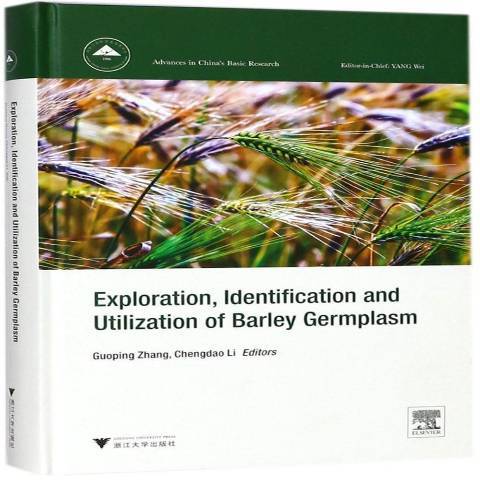內容簡介
張國平、李承道編著的《大麥種質資源創新與利用(英文版)(精)》系統介紹了大麥種質資源研究的新進展,詳細介紹了食品大麥和啤酒大麥品質的提高與種質利用;重點介紹大麥非生物脅迫的耐受性研究的新研究,包括乾旱、鹽性和鋁毒性酸性土壤、洪澇及霜凍等;還介紹了基因測序技術及其潛在的套用的新進展,包括提高產量和以及改良環境耐候性基因的技術等;特別介紹了具有更多遺傳多樣性及更高非生物脅迫耐受性的野生大麥(如我國西藏野生大麥),為大麥育種相關研究者提供了重要的參考資料。
圖書目錄
1 Domestication and Improvement of Cultivated Barley
1.1 Origin and Domestication of Barley
1.2 Distribution and Growth Habitats of Wild Barley
1.3 Environmental Adaptation of Wild Barley
1.4 Utilization of Wild Barley in Breeding
References
2 Malting Barley Quality Improvement and Germplasm Utilization
2.1 Introduction
2.2 Germplasm Foundation for Two-Row Malting
2.3 Screening for Malting Quality
2.4 Integration of Markers into Screening for Malting Quality
2.5 Scald Resistance Marker Development and Utilization
2.6 Utilization of Some Barley Germplasm
2.7 Germplasm and the Future
References
3 Food Barley Quality Improvement and Germplasm Utilization
3.1 A Brief History of Barley Foods
3.2 The Renaissance of Barley Foods in Western Culture
3.3 The Oregon State University Case Study
3.4 Products: a Decision to Embrace a Whole-Grain Rather than an "Extractive" Model
3.5 Product Development
3.6 Quality Evaluations
3.7 Beyond Streaker
3.8 Conclusions
Acknowledgments
References
4 Exploration and Utilization of Salt-Tolerant Barley Germplasm
4.1 Introduction
4.2 Physiologic Responses of Barley to Salt Stress
4.3 Methodologies for Studying Mechanisms of Salt Tolerance in Barley
4.4 Exploration and Utilization of Salt-Tolerant Barley Germplasm
References
5 Exploration and Utilization of Drought-Tolerant Barley Germplasm
5.1 Introduction
5.2 Drought Tolerance Assessment
5.3 Physiological Bases for Drought Tolerance in Barley
5.4 Genetics and Mechanisms of Drought Stress Tolerance in Barley
5.5 Exploration and Utilization of Drought-Tolerant Barley Germplasm
References
6 Exploration and Utilization of Waterlogging-Tolerant Barley Germplasm
6.2 Introduction
6.2 Adverse Effects of Waterlogging or Submergence Stress
6.3 Morphological Strategies for Low-Oxygen Environment
6.4 Molecular Mechanisms
6.5 Metabolism and Signalling Network in Response to Waterlogging and Submergence
6.6 Exploration and Utilization of Barley Genetic Germplasm with High Waterlogging Tolerance
References
7 Exploration and Utilization of Aluminum-Tolerant Barley Germplasm
7.1 Introduction
7.2 Physiological Responses of Barley to Aluminum Stress
7.3 Mechanisms and Genetics oral Toxicity Tolerance in Barley
7.4 Exploration and Utilization of Aluminum-Tolerant Barley Germplasm
References
8 Frost Tolerance and Genetic Improvement in Barley
8.1 Introduction
8.2 Environments
8.3 Frost Management
8.4 Methods of Screening
8.5 Genotypic Variation for Frost Tolerance in Barley
8.6 Genetic Factors Associated with Frost Tolerance in Barley
8.7 Summary
References
9 Exploration and Utilization of Genetic Diversity Exotic Germplasm for Barley Improvement
9.1 Overview of Barley Origin
9.2 Genetic Diversity in Barley
9.3 Barley Uses
9.4 Yield-Limiting Factors in Barley
9.5 Exotic Barley Germplasm for Improvement
9.6 Exploring Barley Genetic Resources
9.7 What Limits Use of Exotic Barley Germplasm in Breeding Programs?
9.8 Summary
References
10 Improvement of Yield and Adaptation by Manipulating Phenology Genes
10.1 Introduction
10.2 Barley Development and Physiological Determinants of Yield
10.3 Control of Barley Development
10.4 Phenology and Adaptation: Matching Crop Phenology to Growing Conditions in Australia
10.5 Manipulating Developmental Phases for Further Yield Improvement
10.6 Conclusions References
11 Next-Generation Sequencing Technology: Implications for Barley Genetics and Breeding
11.1 Introduction
11.2 Barley Genome Sequencing Projects
11.3 Next-Generation Sequencing Technology
11.4 Next-Generation Sequencing Applications
11.5 Conclusions
References
Index

